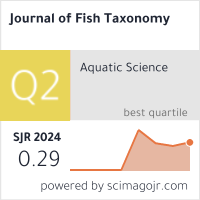Pathogenesis of Venous Thromboembolism in Malignant Tumors: Pathological and Anatomical Significance of Peripheral Blood Pai-1 and Tpa-Inhibitor Complex Levels
Keywords:
Malignant Tumor, Venous Thromboembolism, Pathological Anatomy, Pai-1, Tpa-Inhibitor Complex, FibrinolysisAbstract
Background. Venous thromboembolism (VTE) represents one of the most life-threatening complications of malignancies, contributing significantly to mortality and disability rates among cancer patients. From the standpoint of pathological anatomy, the interaction between tumor cells and the hemostatic system plays a crucial role in the development of thromboembolic processes.
Objective. This study aimed to determine the changes in peripheral blood levels of plasminogen activator inhibitor-1 (PAI-1) and the tissue-type plasminogen activator-inhibitor complex (tPA-I) in patients with malignant tumors and to assess their pathological-anatomical significance in the diagnosis and prognosis of venous thromboembolism.
Methods. The study was based on clinical observation and laboratory analyses. Blood samples obtained from patients with malignant tumors were tested for PAI-1 and tPA-I complex levels using the enzyme-linked immunosorbent assay (ELISA) method and compared with healthy controls. The results were statistically analyzed, and correlations between parameters were evaluated.
Results. PAI-1 levels in patients with malignant tumors were significantly (2–3 times) higher than in the healthy control group. The tPA-I complex levels were also elevated, indicating suppressed fibrinolytic activity. A strong correlation was observed between PAI-1 levels and the development of thromboembolic complications, and histopathological examination revealed thrombi with abundant fibrin deposits.3
Conclusion. Venous thromboembolism in malignant tumors is directly associated with impaired fibrinolytic activity. Increased PAI-1 and tPA-I complex levels in peripheral blood can serve as significant biomarkers for the diagnosis and prognosis of venous thromboembolism. From a pathological-anatomical perspective, the assessment of these markers has great clinical relevance for designing individualized prophylactic and therapeutic strategies in oncology.








